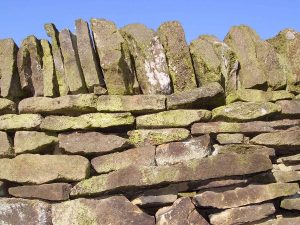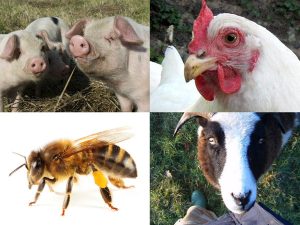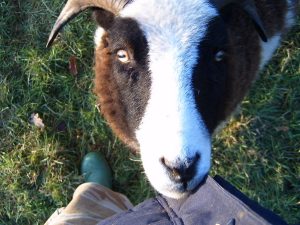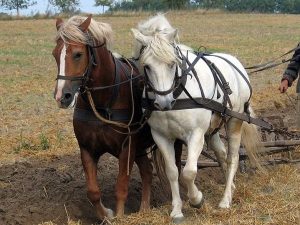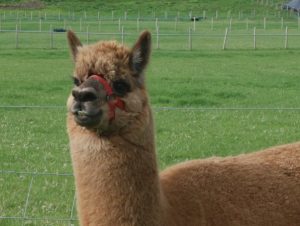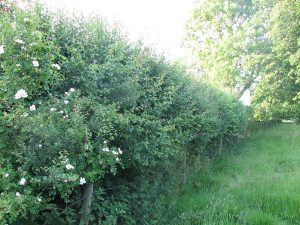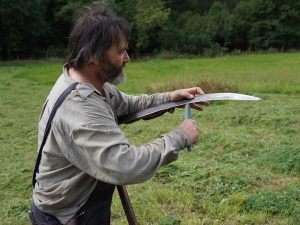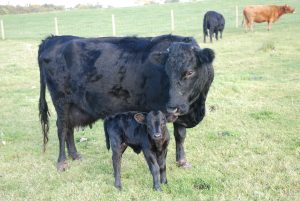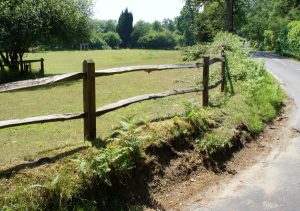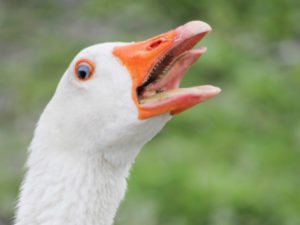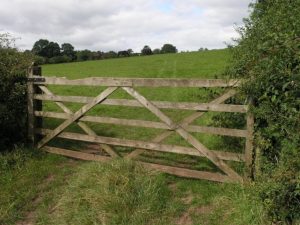Meadows, grass & pasture - introduction
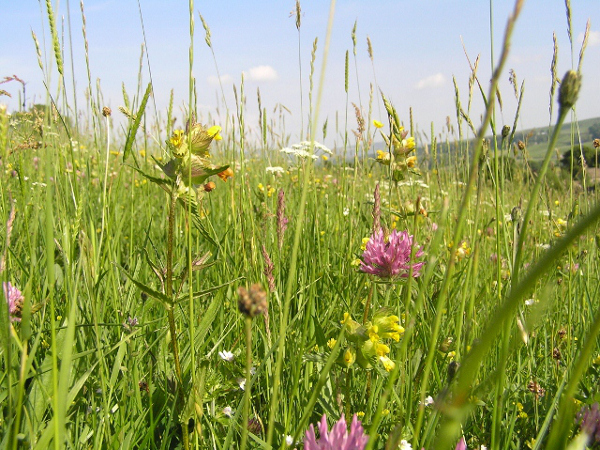
“All flesh is grass.” – Isiah 40:6
Contents
What are meadows, grassland and pasture?
Grass is an angiosperm, or flowering plant, whose flowers are tiny and whose seeds are dispersed by wind, water and animals. Grass can also spread via side shoots and roots, and so can survive and spread even if grazed and cut before it produces seed, which makes it the ideal plant for grazing animals. There are over 10,000 grass species.
The words pasture, grassland and meadow are more-or-less interchangeable, but pasture tends to be used more for grazing land, and meadow for grassland that is cut for hay. The big difference though, is between unimproved and improved grassland.

Flowers & grasses of unimproved pasture, from the top: devil’s bit scabious; crested dogstail; green-winged orchid; quaking grass; pepper saxifrage; red fescue; ragged robin; sweet vernal grass; snake’s head fritillary.
Unimproved grassland is usually species-rich, with quite poor soil, that hasn’t been ploughed or fertilised – or at least not for a long time. It can support up to 30-40 different plant species per square metre (the richest, on chalk land, can support around 50). This in turn supports many more species of butterflies and other wildlife. The problem for smallholders is that it’s not really viable in financial terms if used for grazing or haymaking. However, in the UK there are grant schemes to help manage and protect unimproved grassland – the Entry and Higher Level Stewardship Schemes have been replaced by the Countryside Stewardship scheme, whereby farmers are paid for production foregone to protect wildlife and biodiversity.
Improved leys (grassland sown to be productive), largely contain sown ryegrass, often with clover. Ryegrass is productive and responds well to fertilisers, but supports very little wildlife.
The UK has lost around 97% of its unimproved grassland since WWII, when there was a great push for intensification of agriculture and farmers were paid to ‘improve’ their land, ploughing up old pastureland and applying artificial fertilisers and pesticides.

Harrow being pulled behind a tractor – stimulates growth by allowing light and air into the grass shoots, and by spreading piles of muck.
Types of grassland
Natural grasslands include the prairies of North America, the Pampas of South America, the savannas of Africa and the steppes of Eurasia. The area of grasslands increased globally after the Neolithic Period as humans removed forest cover to provide land for grazing livestock and growing crops.
The three main types that form the bulk of farmed grasslands are: upland acid (the least diverse grassland); neutral (most lowland meadows); and calcareous, on limestone or chalk (the most diverse grassland). There are also springline mires (wet, rushy ground around springs – quite diverse); lowland and upland heath (not strictly grassland, but still grazed); and marginal areas such as lowland marshes and salt grassland alongside estuaries.

Improved grassland species: perennial ryegrass; red clover; cocksfoot; white clover; Timothy.
What are the benefits of meadows, grassland and pasture?
The benefit of improved pasture is in maximising grass, clover and hay yields for livestock, and for unimproved pasture it’s mainly biodiversity, with some hay and grazing. Improved pasture, if managed intensively, can provide very high yields to the farmer or smallholder but at the expense of wildlife. Unimproved, species-rich pasture is much less productive but provides huge benefits in terms of biodiversity.
Unimproved
The natural climax community in much of the UK, in the absence of interference by humans, would be high forest. Nature generally tries to produce forest, unless conditions are too extreme for trees to thrive. But humans have tended to remove natural forest cover for urban development, transport links and agriculture, sometimes replacing it with monocultures of fast-growing conifers.
Unimproved pasture is one example of habitat created by agriculture. Ironically, large areas of unimproved grassland have been destroyed by advances in agriculture over the last century. It is most important that the biodiversity and importance of the remaining areas of species rich grassland is recognised.

Cattle on improved pasture; animals allowed to graze outdoors on grassland are healthier, and produce better meat than animals fed on grain and largely kept indoors.
Native fine-leaved grasses such as red fescue, quaking grass, crested dogstail and sweet vernal grass are considered a good thing in the sward because they are almost never dominant and allow space for herbs and other grasses to grow alongside which promotes a diverse and interesting sward (the sward is the composition of the meadow – i.e. grasses plus wild flowers). Native grasses are also the food plants for the larvae of grassland butterflies such as the meadow brown, hedge brown, ringlet and marbled white.
Agricultural grasses such as perennial ryegrass, Timothy and cocksfoot tend to have a vigorous growth habit and dominate the sward at the expense of more interesting herbs and less competitive native grasses. Although cocksfoot is a good plant for wildlife (larval foot plant of several butterflies) it can become dominant in under-grazed swards. Perennial ryegrass comes in many forms but supports very little wildlife and is almost never a good thing to have in grass sward managed for wildlife.

Three types of unimproved grassland: lowland hay meadow with southern marsh orchids; cattle grazing on springline mire in the Blackdown Hills; calcareous (chalk) grassland.
Improved
It’s good to have clover in your improved pasture, as it’s a nitrogen-fixer and so improves soil without the need for fertiliser, plus it’s good for bees. Meat from pasture-fed animals is better for human health as it’s lower in fat and richer in vitamins and minerals than meat from grain-fed animals. Also, animals fed on pasture don’t require grain to be transported (and often imported), and their dung goes back to the land without the need for machinery or fuel. The animals themselves also tend to be healthier due to their less-intensive management, and so vets bills are generally lower. Here are some research papers on the benefits of less intensive, grass-fed livestock farming.
What can I do?
Unimproved
It’s important in terms of biodiversity not to plough up, overgraze or fertilise unimproved grassland. If you have it, it’s best to receive the grants to preserve it. In fact in England, it’s illegal to plough more than two hectares of unimproved grassland without an Environmental Impact Assessment from Natural England. So the first thing to do for a new smallholder is to get a survey by an ecological consultant to identify the unimproved areas of best habitat. It’s very difficult if not impossible to get it back once it’s gone. Work out the mosaic of what you’ve got and what you want to do with it.

Haymaking with tractor and by hand.
If you want to create species-rich grassland from an existing ryegrass field, it will be difficult (but not impossible) because the soil is full of nutrients. You’d have to stop fertilising and take off repeated hay or silage crops over 5-10 years to reduce the nutrient status (particularly the soil phosphate). Alternatively you could strip the topsoil to use elsewhere. This is quite a drastic step that would need heavy machinery, however.
Unimproved pasture can be cut for hay. If you want to do it as sustainably as possible, and get fit at the same time, use a scythe. Hay meadows are shut down in the spring, and hay is cut in July/August – later than with improved pasture. Then it can be grazed again – this is called aftermath grazing. It makes extremely good hay too – the large range of species means a large range of nutrients – it’s just that it doesn’t produce big yields. Countryside Stewardship grants provide good compensation – often £200 per acre (2015) – comparable to what would have been made from intensive grazing. Plus there are additional supplements, for example around £35 per acre (0.4 hectare) for grazing with cows, which is advantageous because it results in varied sward height, which gives more diversity of species. Countryside Stewardship (High and Mid Tier) is competitive and acceptance is not guaranteed.

Fine-leaved grasses of unimproved pasture provide food for the larvae of butterflies, such as (from the top) ringlet; hedge brown; marbled white; meadow brown.
The key to good diversity within a sward is lowering the nutrients in the topsoil, which may sound a bad thing but lower nutrients in a soil allows more plants to co-exist and prevents domination by grasses that respond to high nutrient status. The key thing to reduce is the phosphate level in the soil rather than nitrates. Nitrates are easily leached and lost from the soil by rainwater and run-off but the phosphates are bound up in the soil and the vegetation itself. Removing the vegetation, by grazing or hay cuts, helps reduce the available soil phosphate and promotes sward diversity.
Sheep are not so good on unimproved pasture, as they graze much more tightly, which can reduce diversity. The exception to this is on chalk grassland, where sheep are traditionally used, and the sward has adapted to be short but very diverse.
Improved
Land that is not unimproved and species-rich can be improved and grazed more intensively for food production. On grass, add lots of manure, and on arable, add manure then plough in autumn or early spring. Work the ground down to a fine seed bed, then drill or sow a mixture of productive grass seed. This will be mostly ryegrass but Timothy and cocksfoot are also productive. For organic farmers there are specialist, self-fertilising ley mixes that are high in red or white clover and/or other legumes (like vetch or trefoil) – nitrogen-fixers that improve soil fertility.

There are vast areas of natural grassland, like this African savanna, that support huge numbers of grazing animals.
A productive pasture needs good drainage, so field drains (backfilled with gravel to prevent blockages) will have to be added where there are wet spots. Weed control can be achieved via good husbandry rather than with herbicides – maintain a tight grass/clover sward with very little room for weeds. Weeds that do appear, such as nettles or thistles need to be topped (cut) before they flower, because livestock don’t like them, but they use up nutrients and shade the grass. Cutting encourages grass and discourages weeds. There are special dock spades to dig out the deep roots of docks, and ragwort is poisonous so needs to be pulled out when the stems are long enough, and burnt.
The pasture can be harrowed in the spring. The harrow can be pulled behind a tractor or a horse/pony, and the small spikes remove dead grass, break up and spread dung piles, and let air and light into the sward to promote growth.
Stocking rates of grazing animals can vary from one cow per hectare to three to four cows per hectare depending on the productivity of the land and the length of the season. Overstocking is bad because it produces compacted, muddy fields, but understocking can be bad too, because pasture needs to be grazed. Do some research to work out the ideal stocking rates for your animals, topography, soil, vegetation and climate. Stocking rates must be reduced over winter so that poaching (fields becoming a muddy mess) doesn’t become a problem.

Plants you don’t want in your pasture: nettles; spear thistle; dock; ragwort.
Bracken can be a problem, particularly in the uplands, and bracken should be cut or crushed to prevent it becoming dominant.
Permanently wet ground like springline mires are usually grazed with cattle or ponies, as sheep tend to get foot problems. Hardy pony breeds can be used as working horses, and for conservation grazing, for example to keep down willow on springline mires. But we can only appeal to people not to use productive land for pony paddocks, as it reduces the amount of land available to produce food and pushes up the price of land for smallholders.
Specialist(s)
Thanks to George Greenshields of Ecologic Consultants for information.
The specialist(s) below will respond to queries on this topic. Please comment in the box at the bottom of the page.

Sue Everett is an ecologist and sustainability consultant specialising in wildlife habitat restoration, especially restoring and creating wild flower grasslands at the large and small scales, conservation site management and farm environment planning. Her website is Meadowmaker.

